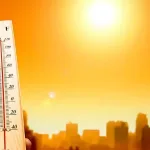In a distressing scenario, the icy terrains of Antarctica are experiencing a rapid transformation. As a result of heat waves, parts of Antarctica are turning green. CNN reports that this alarming transition is raising significant concerns regarding the continent’s future.
The Antarctic Peninsula is warming at a pace much quicker than the rest of the world. The situation made the researchers from the Universities of Exeter, Hertfordshire, and the British Antarctic Survey look into the matter. They utilized satellite imagery and data to investigate the growing vegetation. This dramatic trend raises questions about the survival of this fragile environment.
What’s Causing Antarctica to Turn Green?
Plant life, particularly mosses have surged over tenfold in the last 40 years, the reports from researchers reveal. The vegetation covered less than 0.4 square miles of the Peninsula in 1986. This by 2021, have flourished to nearly 5 square miles.
The years 2016 to 2021 saw a dramatic surge in Antarctica’s greening. This resulted in the acceleration of the region’s warming rate too.
“Our findings confirm that the influence of anthropogenic climate change has no limit in its reach,” Roland told CNN. “Even on the Antarctic Peninsula – this most extreme, remote, and isolated ‘wilderness’ region – the landscape is changing, and these effects are visible from space.”
The statement of Oliver Barlett, Corresponding Author at the University of Hertfordshire, UK claims that the greening of the region will intensify with the warming climate and establishment of these plant ecosystems.
“Soil in Antarctica is mostly poor or non-existent, but this increase in plant life will add organic matter, and facilitate soil formation, potentially paving the way for other plants to grow,” Bartlett added.
Algal Bloom Spread
Green slow algae blooms are visible all over the Antarctic coast, especially west side of islands. During austral summer (November to February in the Southern Hemisphere), these algae thrive in relatively ‘warmer regions’ when average temperatures slightly exceed zero degrees Celsius.
The research team found that coastal birds and mammals have a substantial impact on the dispersion of green snow algae. Their excrement serves as a nutrient-rich natural fertilizer that encourages the growth of algae. Notably, 60% of the algal blooms were discovered within five kilometers of a penguin colony.
The Role of Carbon
Algae have the ability to absorb CO2. However, as ice melts, the sequestered carbon (Carbon sequestration is the process of capturing and storing atmospheric carbon dioxide), contributes to global warming. During the voyages, cruise and research ships, burn fuel and emit an air pollutant known as black carbon.
According to the claims of scientists, the rising presence of black carbon is causing snow in Antarctica to turn black. This occurrence may be related to the rising number of tourist traffic and scientific expeditions in the region.
Impact on Ecosystems

The spread of vegetation on the Antarctic Peninsula is an alarming state. The surge can lead to the formation of more soil and add to the risk of colonization by non-native species.
Another cause is the region’s diminishing albedo effect, or ability to reflect solar radiation. As darker surfaces from increasing vegetation absorb more heat, this could hasten the warming process and upset the ecology. Due to non-natives’ potential to outcompete native plants, the transformation can result in the loss of biodiversity.
Dr. Thomas Roland of the University of Exeter spoke with New Scientist, that this shift could raise concerns about Antarctica’s stability and future.
“In order to protect Antarctica, we must understand these changes and identify precisely what is causing them,” he added.
What Can Be Done?
Scientists say that if immediate action is not taken to protect Antarctica over the next ten years, the repercussions will be global. The time is tickling to maintain this unique habitat. They underline the urgent need to reduce carbon emissions on a worldwide basis to mitigate the ill-effects and maintain Antarctic ecosystems.
As a conscientious citizen, you can play a vital role in investing in environmentally friendly transportation and waste management technology. Notably, this is the most crucial action you can take to protect Antarctica.
It’s still not late enough to take action because the intensifying climate crises in Antarctica can adversely impact humanity worldwide.
- Apples in Thar: Rajasthan Farmers Cultivate the Loved Fruit of Himalayas

- Glaciers are Melting Faster than Ever: Glacier Preservation can be a key to Water Conservation

- Bumps at Auli: National Ski Championship Postponed over Low Snowfall, Third Year in a Row

- Cyclone ‘Alfred’ Blacks out 300,000 Properties in Australia

- Mumbai Already in Grip of Severe Heat

- In North India, a Short Winter doesn’t Always Lead to a Scorching Summer

Naina Jaggi is an author deeply rooted in Journalism, mainly writing on lifestyle, entertainment, travel, politics and financial markets. This diverse experience has allowed her to blend rich details with engaging narratives that capture the essence of various worlds. When she is not crafting tales, you’ll find her immersed in music and enjoying the company of dogs. She is also into K-dramas, thriller and horror movies that fuel her imagination, bringing the same spark to her stories.

Comments